10 tips for choosing a greenhouse to give
Garden beds with vegetables attract summer residents to themselves like a magnet. Constantly there is a desire to grow a new variety of cucumbers or to expand the planting of carrots, but not all such experiments can be carried out outdoors. Inveterate gardeners know that there are cultures that cannot withstand heavy rains, frosts or the scorching sun and require shelter. Then the question of the need for a greenhouse becomes acute. It is worth doing only a superficial search for possible options, as it turns out that greenhouses can be of various shapes, with different frames and covering material. The experience gained by us of numerous summer residents and useful tips will help us choose a greenhouse that is ideally suited to given conditions and goals.
No. 1. Determine the main tasks of the greenhouse
Surely, everyone who is looking for a greenhouse understands why he needs it and for what purposes it will be used. However, before you begin to deal with the advantages and disadvantages of different materials and shapes, you must very clearly outline tasks assigned to the greenhouse. Some summer residents will be quite enough to make her look pretty and look good on plot. Those who consider the building as basics for business or help in the household, although they will pay attention to the appearance of the structure, they will not emphasize it when choosing a greenhouse.
Usually greenhouses are built to grow vegetables and berries for their own use, but some summer residents plan to do business in the future. If in the first case financial investments will not be so significant, then in the second they will become a serious investment, the size of which will largely determine the cost of maintenance.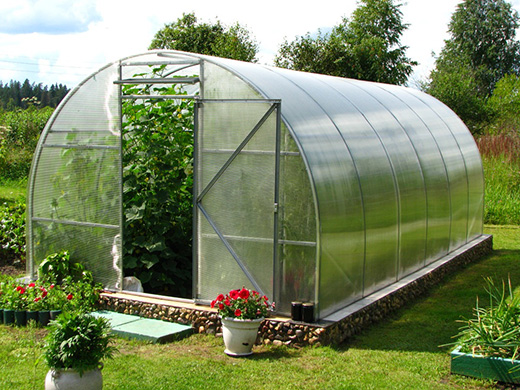
Another question that needs a clear answer is the type of greenhouse model: collapsible or stationary. If you are in the country all year round and are not afraid that in your absence someone could damage or even steal the structure (and this happens), it is better to choose a stationary model - it’s less trouble. A collapsible greenhouse is an ideal option for those who visit a summer house only in warm weather; they will have to collect and disassemble it twice a year.
The selection of certain parameters of the greenhouse also depends on what plants will be grown, because each culture has its own requirements for lighting and humidity. The height of the greenhouse also depends on the characteristics of the plants. For example, for tomatoes and other tall crops, it is better to choose a rectangular structure.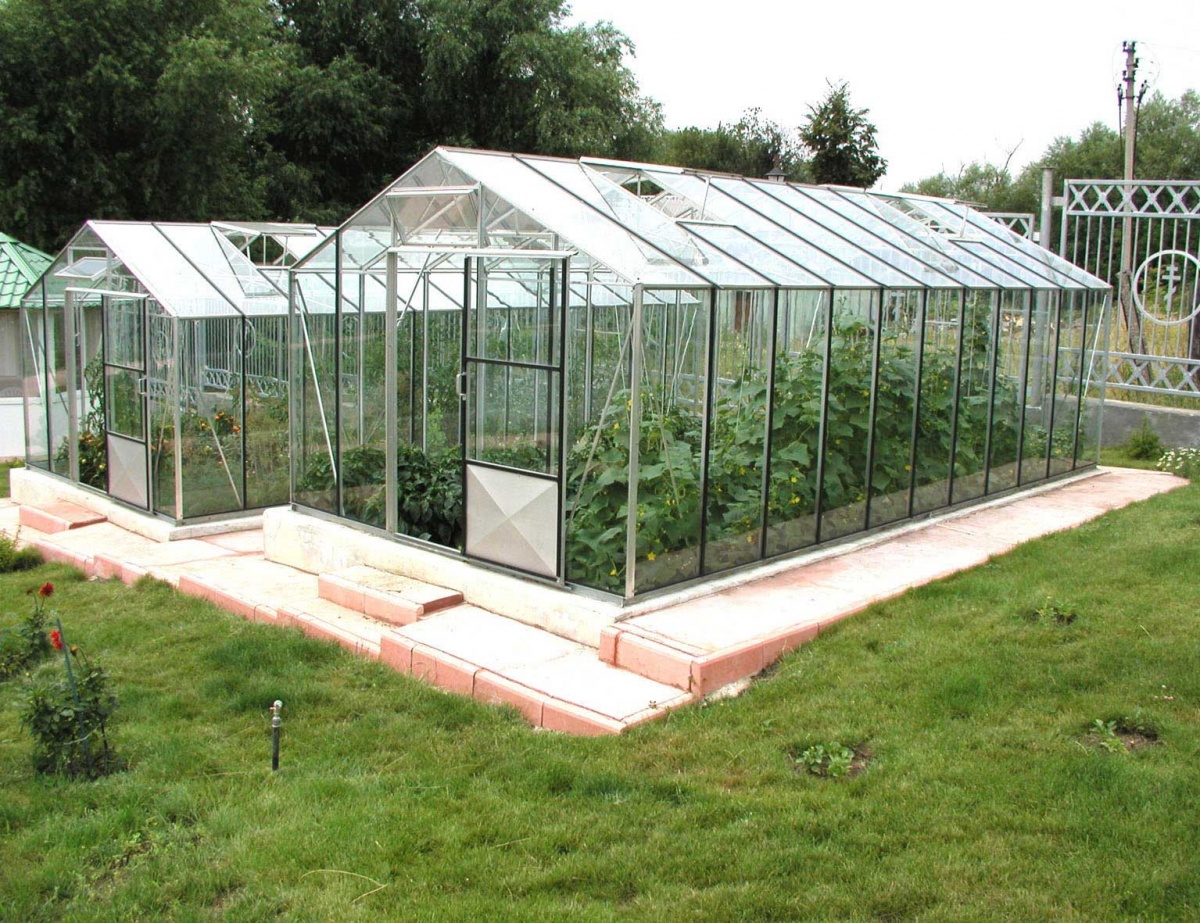
No. 2. Where to put the greenhouse?
Choosing a place for a greenhouse is no less important than choosing the most suitable design. If the greenhouse is improperly located on the site, money for its purchase and installation can be considered wasted, as well as efforts to grow plants. When choosing the best place for a greenhouse, it is worth considering such factors:
- light level - a key parameter when finding a suitable place. The greenhouse should receive during the day as much light as possibleDo not be shaded by trees or houses. Otherwise, the cost of artificial lighting, but it will not help to grow the crop in the expected volume. Experts advise arranging the greenhouse so that one end faces west and the other east. With this arrangement, it is possible to achieve maximum illumination. If the plants will be grown in the winter, then without artificial lighting not to do, so in advance it will be necessary to consider communications;

- the winds. The greenhouse must be placed in the most calm and quiet place of the site, protected from winds and drafts, because they will significantly cool the structure, which will lead to serious costs for heating in the winter season. A house next to it can be a good protection from the winds, but it will cast a shadow, so it is best to protect the greenhouse with a hedge or a deaf the fence small height, located at a distance (for example, for a greenhouse 2-2.5 m high, a hedge can be placed at a distance of 7-7.5 m);

- topography and soil type. The greenhouse must be installed only out of the blueif there is none, then you will have to artificially level the earth. Sandy and marshy soils, like lowlands, are not very suitable for greenhouses, and clay soil will need to be first covered with gravel, and only then with a layer of fertile soil;

- convenience of placement. Many summer residents place greenhouses on the outskirts of the site. This is justified if, for all other factors, this is the most suitable place. The further the greenhouse is located, the less convenient it will be to service and the more expensive it is to bring all communications.
No. 3. Greenhouse frame material
The resistance of the greenhouse to all negative environmental factors depends on the frame: winds, snow weight, mechanical damage, etc. It is better to spend one time on a more reliable and durable construction than to repair or change it every year. Today, manufacturers offer frames made of wood, plastic and metal. Let's figure out which one is better.
Wood frame
Tree - most affordable material for the construction of the greenhouse frame, therefore, in domestic spaces its popularity is consistently high, despite the imperfection. Many craftsmen who decide to build a greenhouse with their own hands choose a tree, since it is easy to handle and has light weight. Among other benefits:
- high environmental friendliness;
- resistance to corrosion;
- good thermal insulation qualities;
- low cost.
The main disadvantages:
- low strength, in this parameter the wood is inferior to plastic and metal;
- ability to absorb moisture and rot;
- the need for constant care to protect against moisture, mold and pests;
- low durability and the need for constant repairs.
If you do not think of a system for removing water from the greenhouse, then the wooden frame will not last long. Such designs are popular only at the expense of low cost.
Plastic frame
A PVC frame is one of the most suitable options for greenhouses, but so far it is used infrequently in our view high cost, which is explained by the complexity of processing the material.
Benefits:
- high esthetics;
- strength;
- resistance to alkalis, acids, fertilizers and other chemicals;
- resistance to corrosion and decay;
- low weight and ease of installation do-it-yourself;
- low thermal conductivity.

Aluminum frame
Aluminum frames are assembled from pipes or profiles, their characteristics are almost identical, and Main advantages are as follows:
- ease;
- resistance to rust;
- minimum maintenance and ease of installation.
Minuses:
Steel frame
Steel frame - best choice for today in terms of price and quality. The main virtues: strength, durability, ability to withstand heavy loads, and all this at a fairly low price. The main limitations - low heat insulating properties and susceptibility to corrosion.
Steel frame can be made of:
- pipes;
- profile.
The difference is significant, each material has its own advantages, and the debate about which option is better is reminiscent of reasoning about what was first, a chicken or an egg.
Steel pipe frame - the ideal of strength and durability. He is not afraid of snow and wind loads, he does not bend and does not deform in the winter, but he will have to pay for all this: the frame from the pipe is much more expensive than the similar one from the profile. Moreover, it is worth considering the heavy weight of the structure and the difficulties in transportation and sometimes in installation.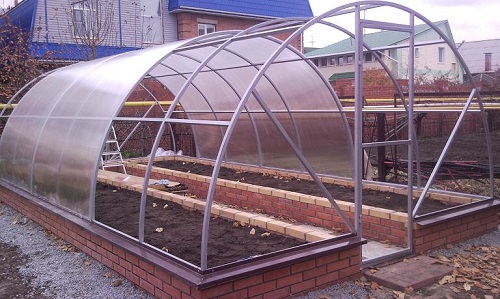
Profile frame cheaper, easier to install, it is not a problem to install it with your own hands, but it is inferior in strength to the analogue of the pipe, therefore it may require amplification.
Steel is susceptible to corrosion, and to protect the frame, galvanize or paint. The second option is cheaper, but involves periodic tinting to avoid corrosion on the metal and rust spots on the covering material. A galvanized frame will cost a little more, but it is considered the more preferable option, since it will not need additional protection for the next 10 years at least.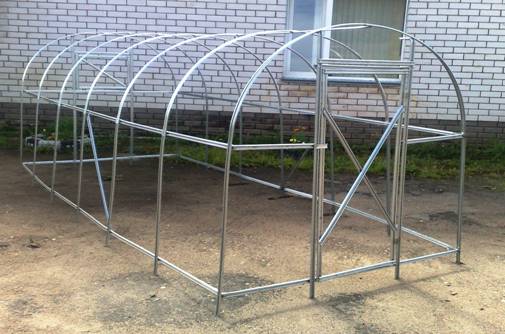
To metal frame lasted more than one season, pay attention to the following parameters:
- the fewer elements used to produce arches and pediments, the better. Ideal - one-piece arches and welded pediments;
- profile section - 20 * 40 mm, it is impossible to find more;
- metal thickness - not less than 1.2 mm;
- distance between arcs - not less than 0.67 motherwise, during the first light snow, the covering material with the frame bend.
Number 4. Does the greenhouse need a foundation?
Experienced summer residents prefer to equip foundation under the future greenhouse. He helps solve a lot of problems:
- heat preservation and plant protection from frost;
- protection of soil and greenhouses from rain flows;
- ensuring reliable mounting of the frame;
- protection of the material of the frame from destruction.
And if in some cases without foundation you can still do it you must definitely equip if:
- the greenhouse is used all year round;
- the frame is made of wood;
- the structure is buried in the soil below the level of its freezing;
- the greenhouse is large (more than 6 m in length);
- the structure is located on a slope or in a poorly guarded place.

No. 5. What is the best foundation for a greenhouse?
Depending on the objectives pursued, choose one of the following foundation options:
- tapeorganized by concrete, less often sleepers, bricks or gravel. Previously, the arrangement of such a foundation was considered mandatory, but now it is performed by many summer residents. The construction is almost capital, it will not be possible to transfer it to another place;
- block foundation made of reinforced concrete blocks, it is suitable for regions with loose soil;
- pile and point foundationeasy to arrange and allows you to build a solid reliable greenhouse;
- timber foundation Recently it is used more and more often, it can be equipped even by not the greatest professional in the field of construction. A tree will require pre-treatment with antiseptics, but a greenhouse with such a foundation can easily be moved from one place to another - ideal for growing vegetables.

No. 6. Types of cover for the greenhouse
It is easy to notice that it is the covering material that occupies the largest area of the greenhouse, therefore, summer residents pay maximum attention to its choice. For now such materials are actively used:
- plain and reinforced polyethylene film;
- glass;
- polycarbonate.
Each of these materials deals differently with its direct functions.
Glass coating
Previously, glass was almost the only suitable material for arranging a greenhouse. Today everything has changed, but it continues to be used in view of such the benefits:
- good light transmission;
- high thermal insulation characteristics;
- resistance to temperature extremes, chemicals;
- durability;
- aesthetics.
Minuses:
- heavy weight, requiring a very good frame;
- fragility. Hail can damage the material, and using laminated or tempered glass is too expensive a pleasure;
- long and laborious installation process;
- lack of a filter against infrared radiation, which may be harmful to some plants.
Glass choose at least 4 mm thick. The larger the sheets, the higher the light transmission (reduced area of the frame), but the higher their fragility.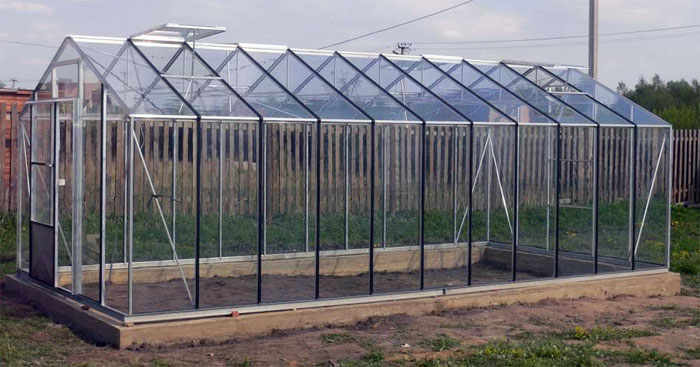
Polyethylene coating
It is worth taking a look at any country cooperative to notice that plastic film is used to equip greenhouses most often.
Benefits:
- good light transmission and the ability to gently scatter light;
- low price;
- ease of use and low weight;
- plant protection from light frosts (up to -30FROM);
- Suitable for greenhouses of any shape.
disadvantages:
- rapid wear, especially in places fastenings, so you have to change the film every year;
- accumulation of condensate on the surface of the film, which can lead to a number of diseases in plants.
For a low price and ease of use, gardeners forgive polyethylene for fragility.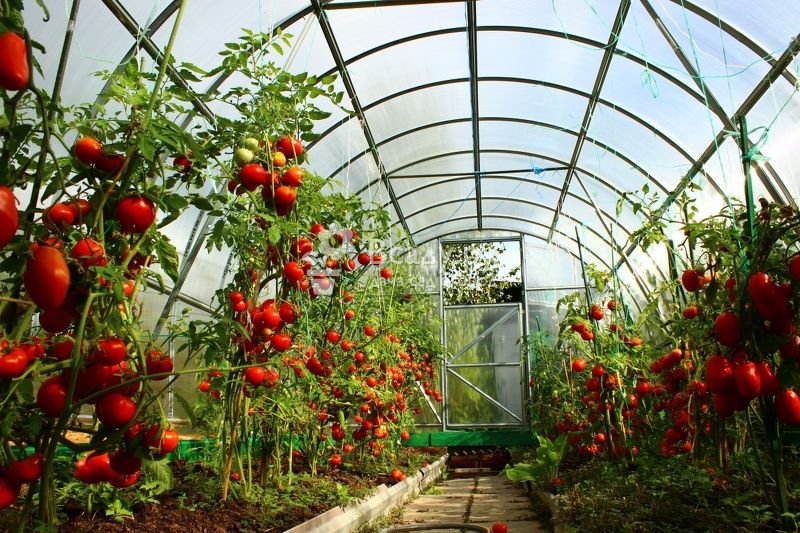
If you look, the material is presented on the market several varieties:
- ordinary plastic film. It is sold in rolls with a width of 120-300 cm, it requires special care when mounting on a frame, since the slightest cut can soon increase significantly. Especially dangerous places for a guarantee are better to be sealed with tape;
- Pvc film more expensive than polyethylene, but several times stronger, it can last 5-7 years, it retains the heat accumulated during the day, retains infrared rays;
- reinforced plastic film It can serve for several seasons in a row, as it is supplied with an inner frame made of fiberglass, polypropylene, twisted polyethylene or other materials. Can withstand hail and strong wind.

Polycarbonate coating
The most modern and balanced material in terms of price and quality for covering greenhouses is cellular polycarbonate. Please note that the market also has monolithic polycarbonate, but it is not suitable for equipping greenhouses. Cellular Polycarbonate It has a special structure: inside it are partitions (honeycombs) filled with air. A similar structure provides many advantages:
- high strength, 200 times higher than the same parameter for glass. Rain, strong winds and even hail will not harm polycarbonate;
- excellent light transmission and much better than glass, the ability to retain heat;
- simplicity of work, as the material bends well, is easily cut and drilled, has a small weight;
- relative durability (up to 15 years);
- great appearance.
At choosing polycarbonate for the greenhouse stands pay attention to thickness: she must be not less than 4 mm, and preferably 6 mm, for arrangement the roof greenhouses are better to look for sheets with a thickness of 7-8 mm. Without special protection, the material is poorly resistant to sunlight, therefore must have a protective layer - Do not believe the sellers who talk about the use of protective additives in bulk, this is all short-lived material. Polycarbonate tends to expand when heated, so experienced specialists recommend installation at a temperature of at least +100C and fasten the sheets with an overlap.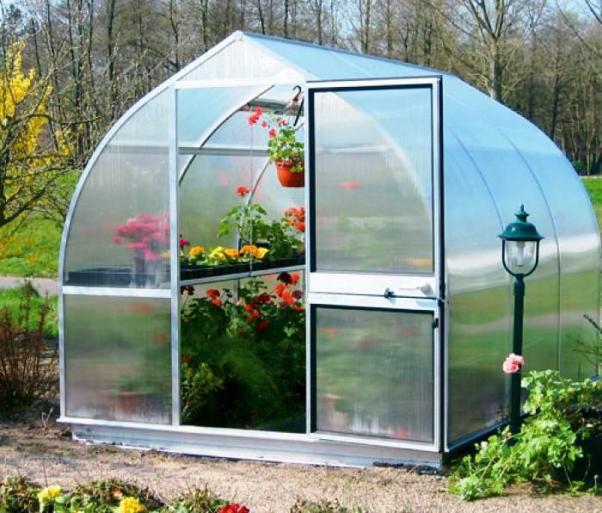
Other materials for sheltering greenhouses
The following materials can also be used to cover the greenhouse:
- spanbond - non-woven material obtained from a polymer melt with the addition of stabilizers for resistance to ultraviolet rays.This is a dense canvas of white color, often referred to as agrofibre. It has good strength, light transmission, high thermal insulation properties, is resistant to decay, temperature changes and chemistry, lasts up to 5 seasons;

- plexiglass - durable material, suitable for northern snowy areas. Of the minuses - a high price;
- fiberglass made from polyester resins, reinforced with reinforcement, retains heat well.
Number 7. Greenhouse shape
To ensure a good harvest, it is not enough to choose a suitable frame and covering material, it is also necessary to find the optimal shape. The most common options are:
- arched greenhousesas well as domed and droplet-shaped ones that retain heat very well, are easy to arrange, do not contain sharp corners, therefore they require much less covering material, precipitation does not linger on them. Such structures can be transformed, but they limit the choice of coating - polycarbonate is used mainly. In addition, access to the outer beds will be difficult;
- gable greenhouses require more material for arrangement, but the area for planting in them is much larger. The design provides a beautiful lighting even with a cloudy sky, it withstands snow loads well, but costs more than an arched one;
- greenhouses often equip near the wall of the house, which allows good savings. The roof slope is better directed to the south side;
- greenhouse pyramid - An option for those who love everything unusual. The designs are complex in execution, in demand among gardeners;
- polygonal greenhouse - A spectacular and expensive structure, but due to the presence of a large number of faces, the structure warms up well at any time of the day.

Number 8. Greenhouse Dimensions
Everyone decides whether to purchase a finished greenhouse or build it on their own, what type and size it should be, but when choosing, consider some useful recommendations. The optimal width of the greenhouse is 3-3.5 mif there is already, then the required number of beds will not fit, and you will have to save on passages. The length can be any, a common option is 4-6 m. Make a greenhouse longer than 6 m is not recommended - Plants will be harder to care for. It is better to make two greenhouses of 6 m each than one for 10-12 m. The optimal height to the ridge is 2.5 m, the height of the low wall is 1.5 m. The doors should be wide enough (about 1 m) so that you can easily was to call in a greenhouse with a garden trolley.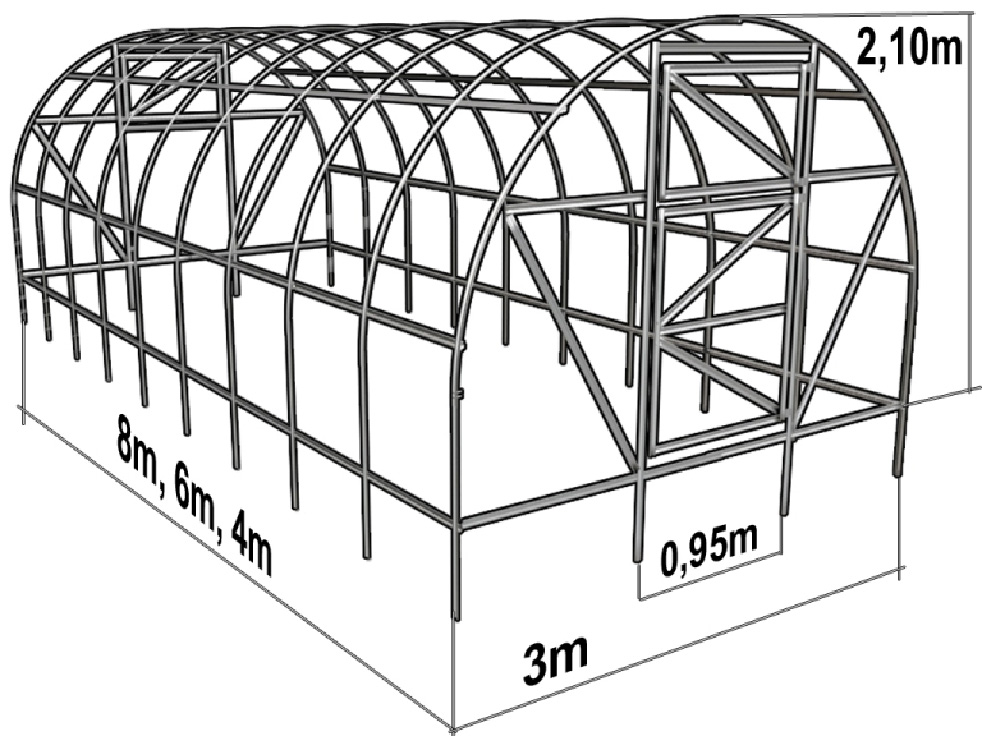
No. 9. Attention to a complete set
If you, like many summer residents, opted for finished greenhouse, then when buying, pay attention to what is included in the kit. In addition to the frame and covering material, there must also be seals, as well as doors and windows. The location of the latter is of great importance: in the summer heat, without normal ventilation, the plants in the greenhouse will burn up, so ideally the doors should be on both sides, the presence of window leaves is also necessary. The prefix "economy" in the model name of the greenhouse, it means that the greenhouse can only be used in warm time or its design can be substantially modified, since the step between arcs is often too large. The responsible manufacturer will always provide the assembly with assembly instructions.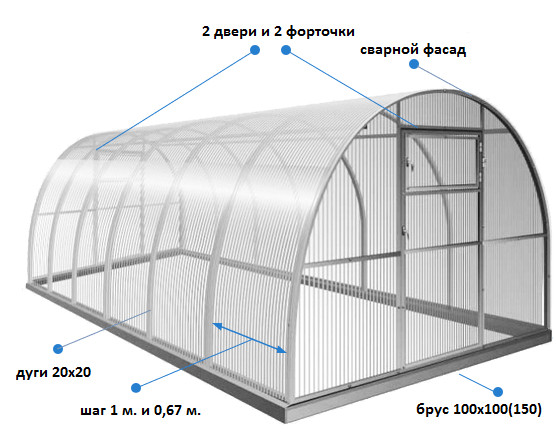
No. 10. Top greenhouse manufacturers
The secret to choosing a quality greenhouse is simple: do not buy at too low prices (often these are Chinese-made products and very low quality) and trust large manufacturers, and it is advisable to contact the company store or on a company’s website, not an intermediary. Little-known one-day firms are not the best option - they can close soon, you can’t claim them, and you can’t buy a new greenhouse for a couple of thousand rubles saved.
Among the products presented on the domestic market, the products of such companies are best shown:
 "Will" - the largest domestic enterprise in the field, operating since 1993, producing polycarbonate greenhouses, film greenhouses, various materials and accessories for greenhouses, as well as industrial greenhouses and a number of related products and irrigation systems;
"Will" - the largest domestic enterprise in the field, operating since 1993, producing polycarbonate greenhouses, film greenhouses, various materials and accessories for greenhouses, as well as industrial greenhouses and a number of related products and irrigation systems;- company "New forms" produces only polycarbonate greenhouses. The frame is distinguished by a reliable zinc coating, solidly welded, polycarbonate is represented by products from different manufacturers. 7 years product warranty;
- "Ready-made greenhouses factory" It has its own production of polycarbonate with a thickness of 4 to 16 mm and a steel square pipe. Warehouses are located in all regions of the country;
- "People's Greenhouse Plant" independently produces a square metal pipe for the construction of the frame; the finished greenhouses are completed with polycarbonate of domestic production with a thickness of 4-10 mm with a protective coating. The range also includes a number of related products;
- Rus-Teplitsa offers easy-to-install greenhouses made of painted and galvanized pipes coated with polycarbonate;
- Greenhouses of the North. The company has been operating since 2010, it manufactures frames made of galvanized profile coated with polycarbonate in various shapes and sizes.
The selection of ready-made greenhouses is impressive, and summer residents with hands can try to build a greenhouse on their own. Be that as it may, when choosing and building a greenhouse, take into account the nuances described above.

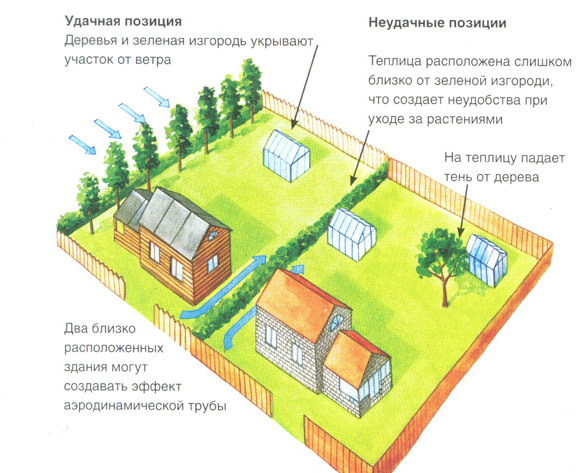

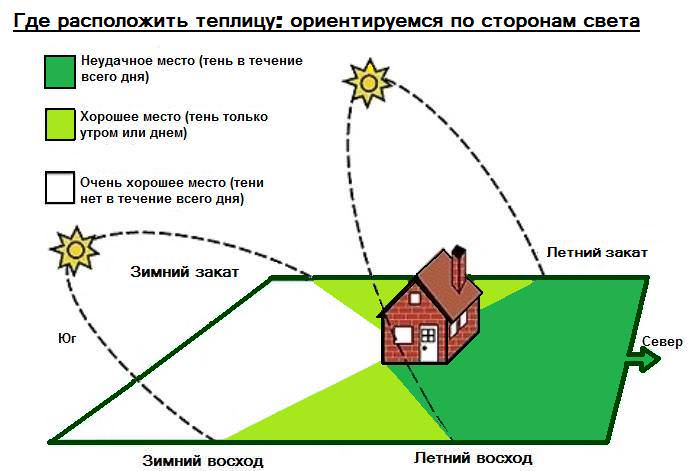
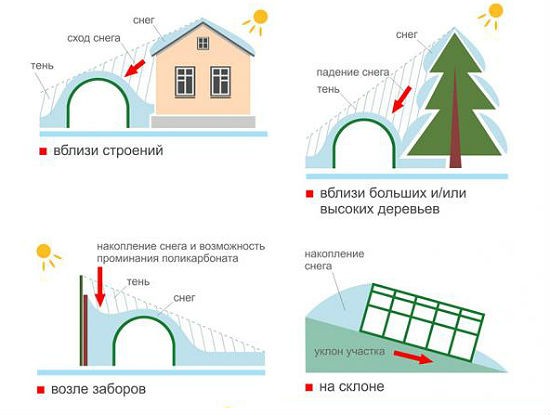


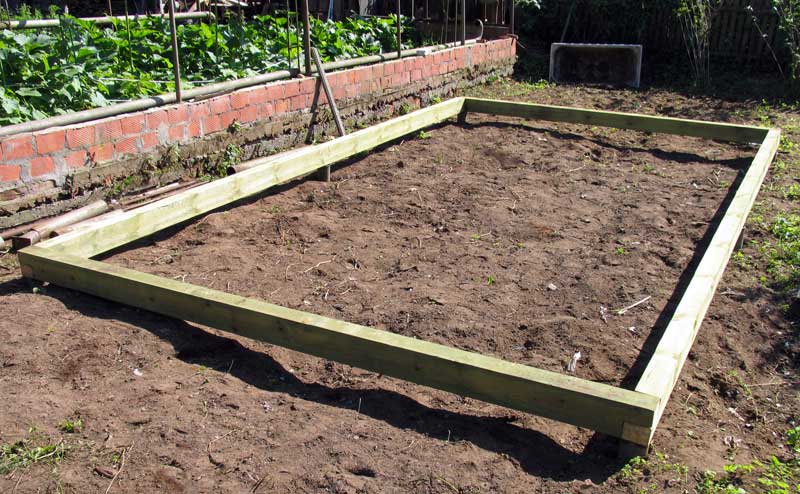
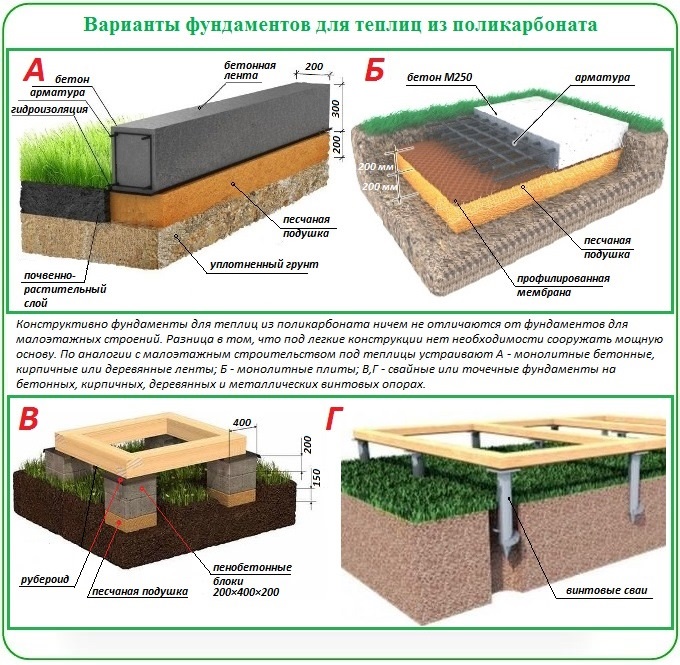
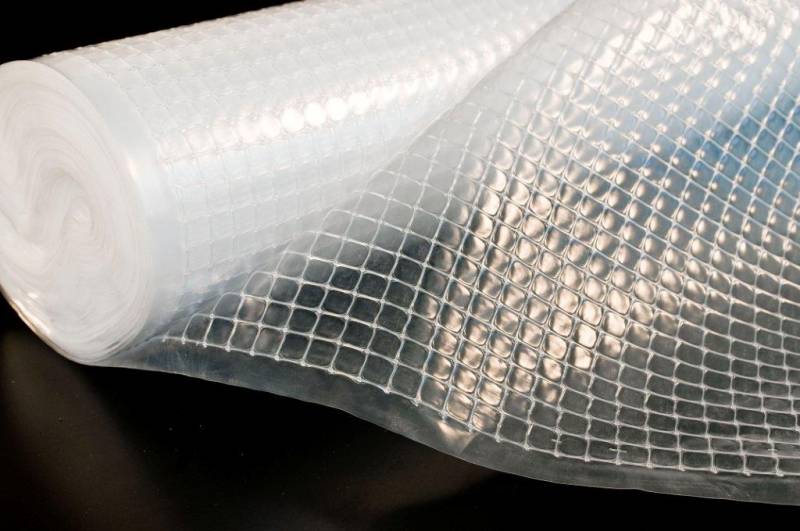
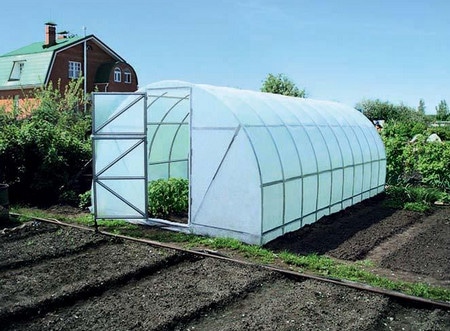
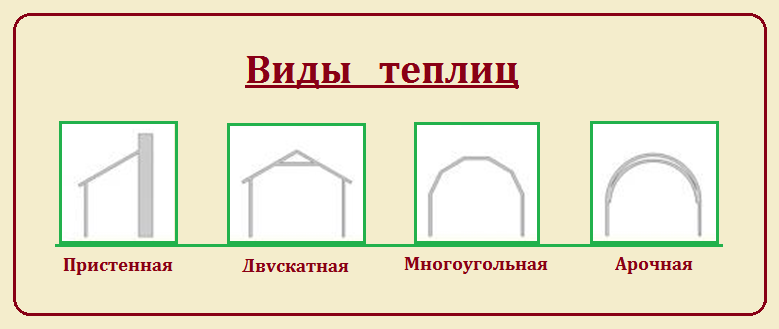
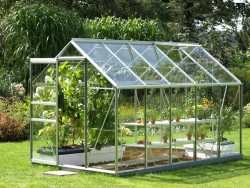
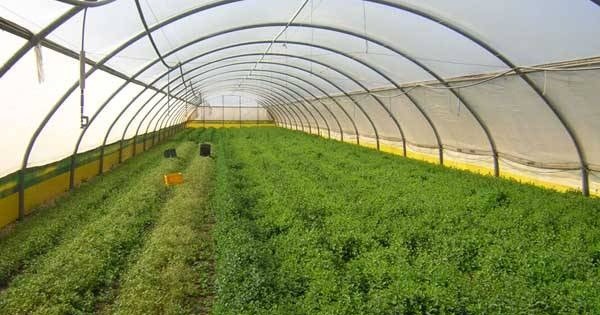
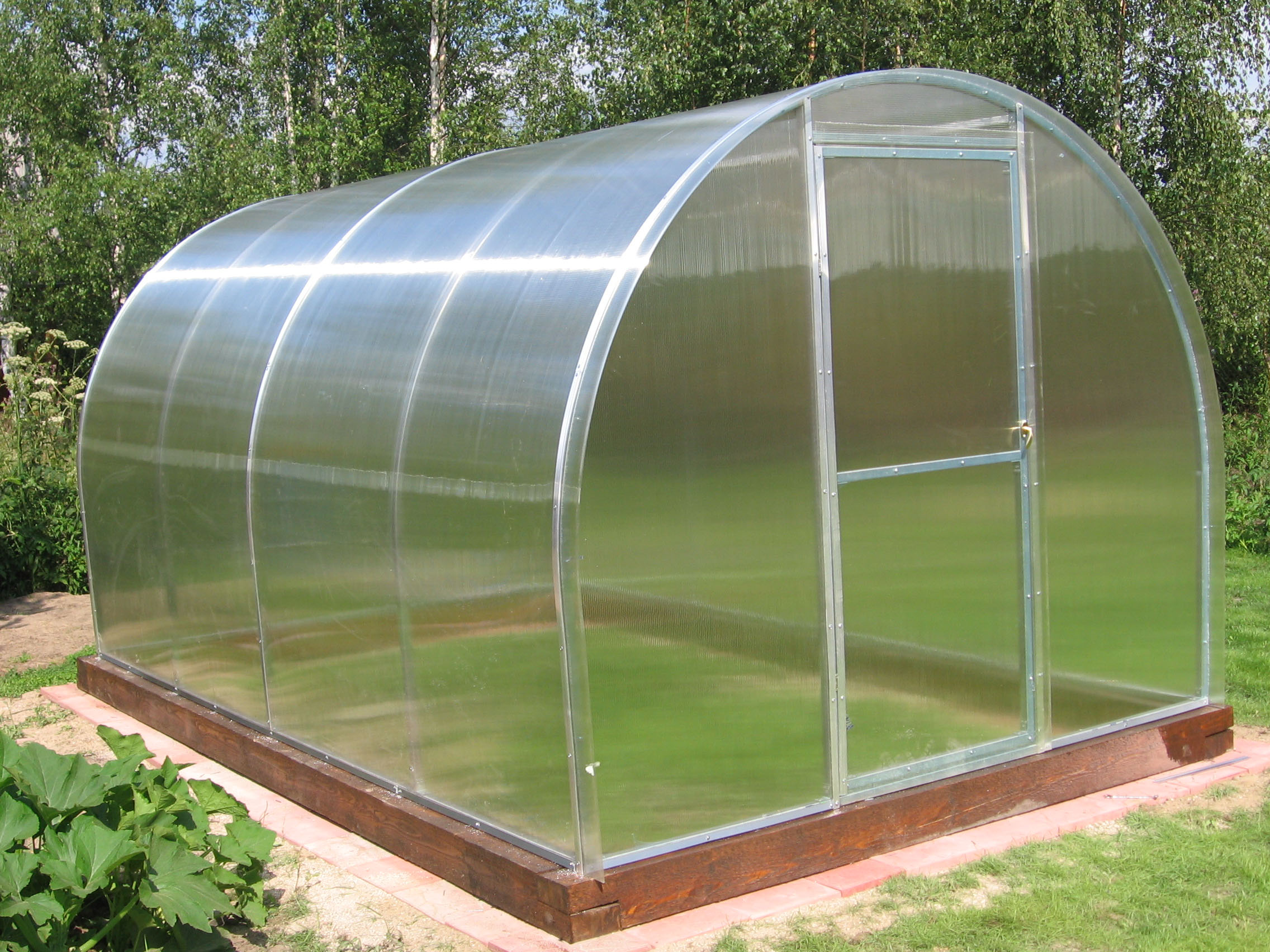

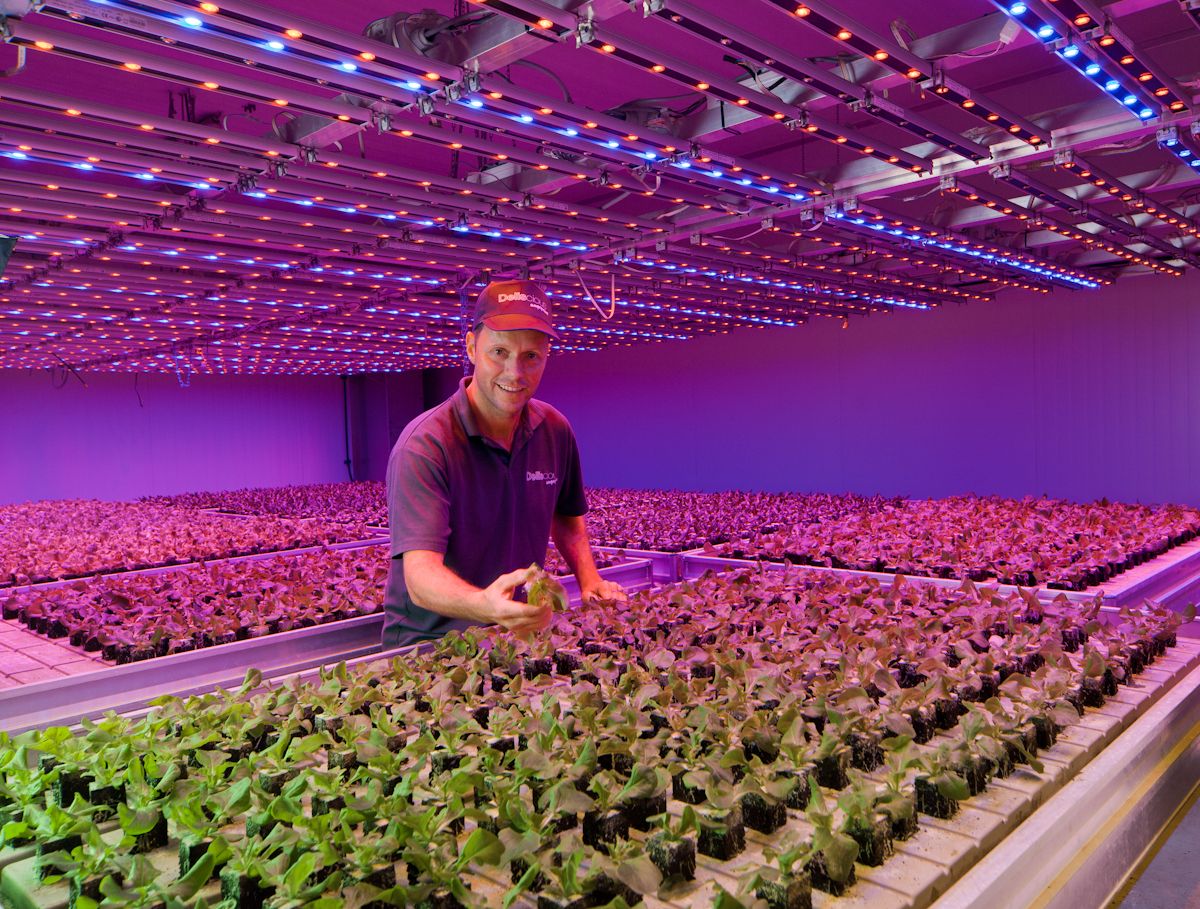
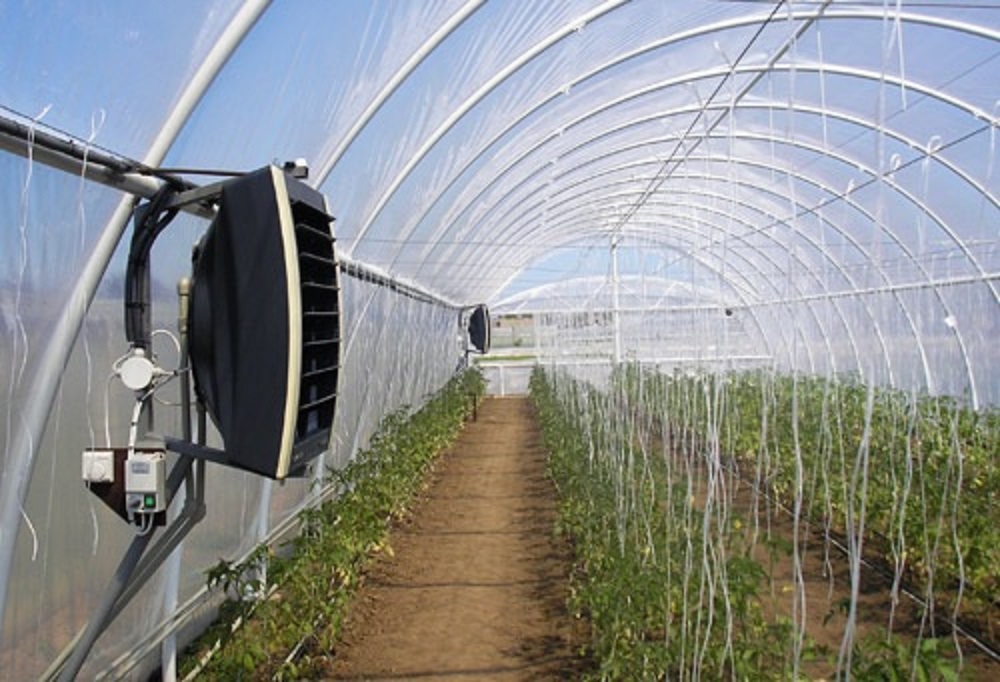
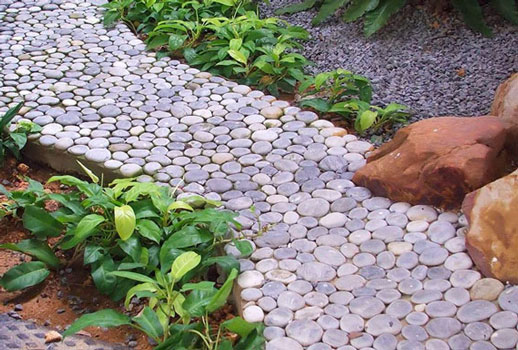
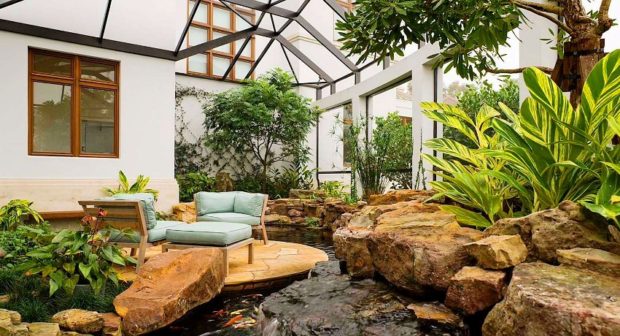
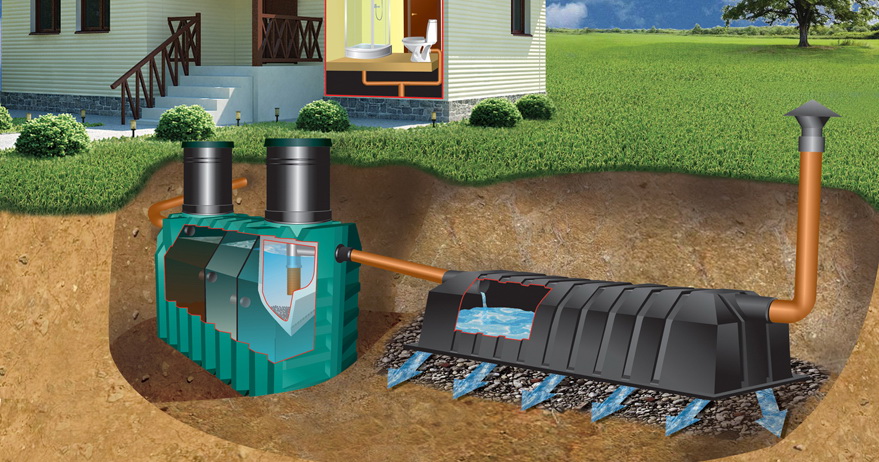

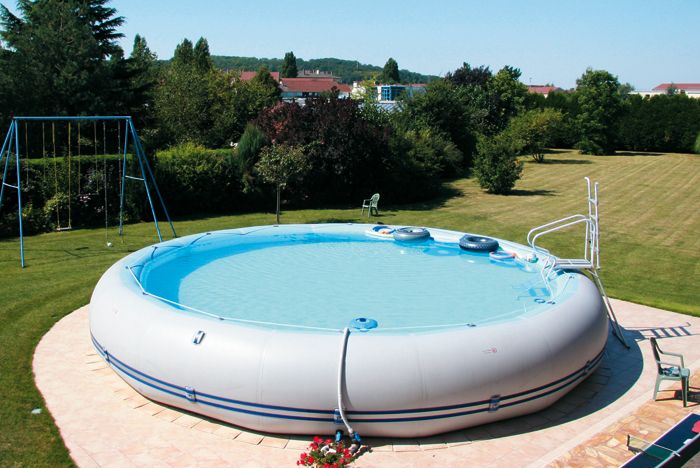
Last year I bought myself a polycarbonate greenhouse made of galvanized steel and was satisfied. Harvest exceeded all expectations, the winter stood perfectly!
Thanks for the article, a lot of useful information. Last fall I bought a greenhouse for myself. I monitored a lot of companies, I chose a specially large one, I thought that if I took a greenhouse I would immediately have a good big one for a long time. I planned a lot of planting.